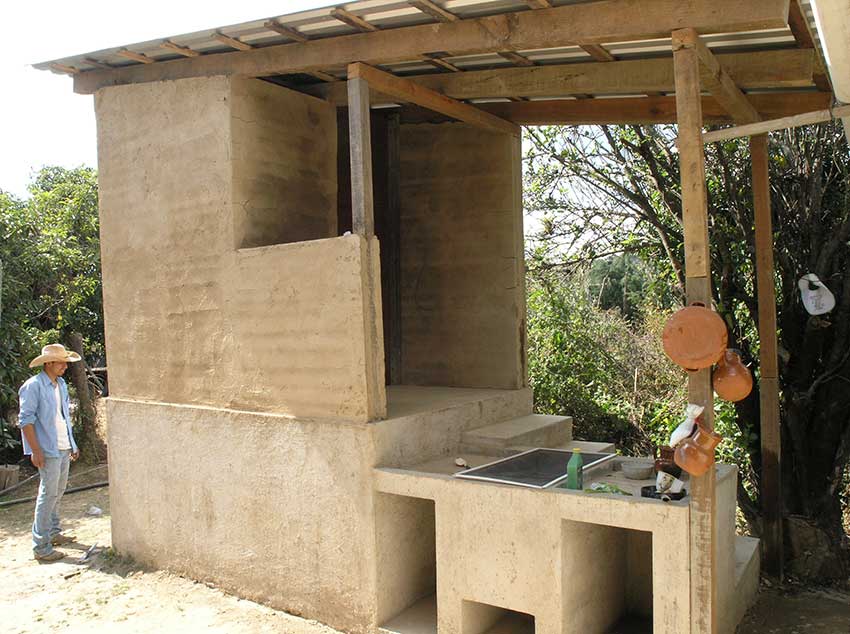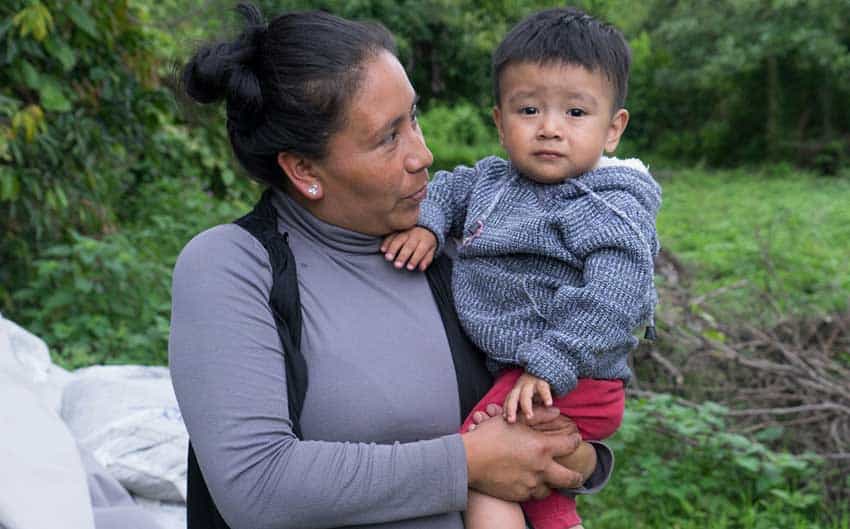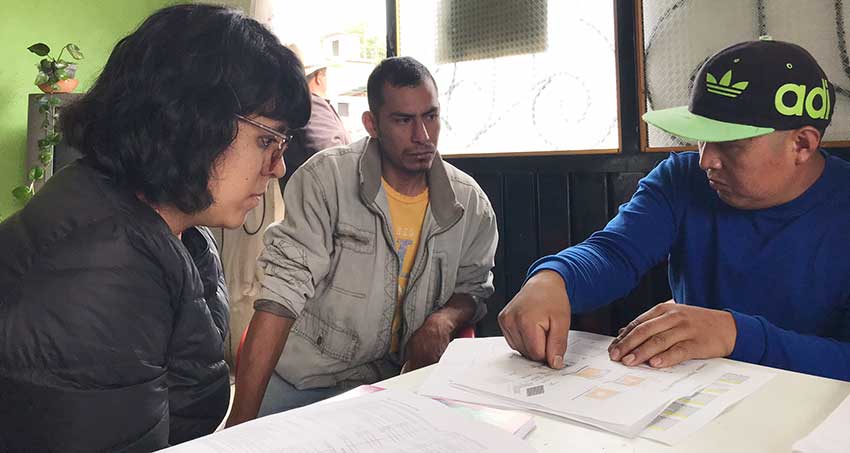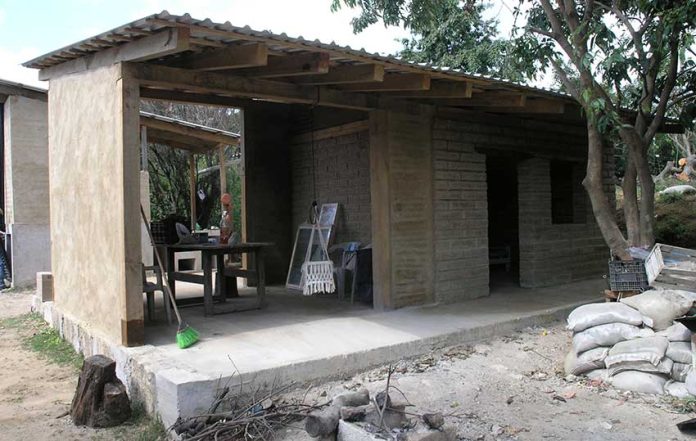For some, the 7.1-magnitude earthquake that shook central Mexico on September 19, 2017 is now a distant memory. But for many others, the effects are still being felt.
While Mexico City received the lion’s share of attention, with videos of crumbling buildings in the massive capital seen worldwide, the communities around the epicenter in Raboso, Puebla, near the border of Morelos, were devastated.
Within a week of the earthquake, while rescue crews still combed through buildings in Mexico City in search of trapped victims, Taller Nuevos Territorios, a network of engineering and design specialists, was already on the ground in some of the most desperate communities of Morelos.
With international and national donations and volunteers, the group raised 80 emergency shelters made with heavy tarps and vinyl siding in the village of La Nopalera within three weeks. Another 49 were raised in Hueyapan. The communities were involved in the process throughout, said TNT coordinator and architect Brenda Solano Picazo.
“We originally raised about 397,000 pesos [US $20,800 at today’s exchange rate], which we managed to get together very quickly,” Solano said. “In the days immediately after the tremor there was a lot of willingness to help. With the project of building homes it has been much more difficult, partly because the amounts we require are much higher. We managed to gather about 325,000 pesos, which covered the cost of one home and one separate bedroom next to another home.”

In La Nopalera, Solano said, the Mexican military was fully involved in helping with reconstruction. That help, she said, did not arrive in Hueyapan, so the team decided to direct its focus on what seemed to be a forgotten community.
TNT also directs sustainable private architecture projects (specializing in clean water technologies) in areas of Michoacán and México state, among other places.
Based in Mexico City, it consists of Solano and co-directors Daniel Jaramillo and Claudia Rodríguez, and a small group of architects completes the team. The group’s original idea had been to create multiple adobe homes using local manpower, starting in Hueyapan.
It would seek donations as it had been doing following the earthquake, and rely on training locals how to construct with an endemic material. Beneficiaries would receive a home but nothing comes free.
The condition placed by TNT was that the homes would be built from adobe, not concrete. And that those who benefitted from the homes would be able to participate in their construction in order to learn a new skill. Solano says that the payment TNT had organized for builders was higher than the average take-home salary of a person living in Hueyapan.
The group returned to Hueyapan a year after the deadly quake in order to make good on its promise: to create sustainable, earth-based homes for local people who needed them and who were willing to chip in and assist in the process.

In December, TNT completed its first adobe home after four months of construction. It was built for Marcela Ramírez, a widow who was left homeless with her infant son as a result of the earthquake. She contributed to the process by providing meals to the building team.
“I want my family to grow up in an adobe home, because that is what we have always had in this community,” Ramirez said. “The material itself is ideal because it’s cool during the day and warm at night. Concrete doesn’t do that. I also want to have adobe because I feel in contact with the earth that way. I want my child to grow up in contact with the earth and in contact with our history.”
Adobe is a natural building material used worldwide and one of the oldest housing materials on record. The basic idea behind adobe is that the materials used (depending on location they can in some cases be animal manure, cornstalks, etc.) are locally sourced and therefore lower cost.
The other benefit of adobe is that it is a thermal material, keeping homes cool during the days underneath intense sunshine (as is common in the high-altitude communities of Morelos) and keeping them warm at night when temperatures drop to near freezing. The material has about an eight-hour release time, meaning that the heat of the day remains through the night and the cool of the night remains during the day.
Traditionally, all homes in Hueyapan and La Nopalera were made with adobe. But over the years adobe has come to be seen as a lesser material because it is associated with being indigenous (an association synonymous with “poor” and “uneducated” since the era of the Spanish invasion in the 16th century) in Mexico’s clearly marked race and class system, and because concrete is associated with progress.
Nevertheless, Solano said that TNT had done calculations that found that using concrete was actually more expensive than adobe. And of course, concrete does not offer the thermal benefits.

Following the destruction in small communities like Hueyapan, Solano said, many masons and construction workers raised their prices in order to profit from the demand. And while Mexico’s disaster relief fund, Fonden, did give financial assistance to those who lost their homes in the earthquake, it was at times complicated to access.
People who were deemed to have lost their homes — but only those who were deemed to be the owner of the property — received money deposited into an account that could be withdrawn for labor costs only. They were also given a card with funds on it, but it could only be used at certain government-approved stores.
Back in Hueyapan, TNT hired local farmer Jorge Flores to work on the adobe home. A skilled mason, Noé Lucas, came from México state to serve as foreman. Though Flores is not a carpenter or mason by trade, he said he’s picked up those skills over the past year following the earthquake, when everyone had to jump in with a helping hand.
“What happens is that in this case we needed to bring in a foreman, and he was able to teach the other workers how to build with adobe and of course they were getting paid,” Solano said. “Now, Jorge could easily oversee an adobe construction project.”
Many of the hundreds of homes that were damaged or destroyed in Hueyapan have been reconstructed using concrete, while other groups have come in with earth-based materials as well, including bamboo and superadobe (a twist on traditional adobe but using specific architectural formats and the mineral lime). Still, Solano said, keeping the tradition of adobe housing alive in the community is important.
“Now that people have seen how happy Marcela is with her house, they are also interested in having an adobe home,” she said.
“Being there and building with adobe is helping to change the perception of adobe. In reality, it doesn’t take that much longer to build . . . than with concrete and ultimately the price is much, much less because the primary component is earth which means that people don’t even have to leave the area in order to obtain the materials.
“As architects interested in earth-based materials, we want to rescue this ancient method of construction. There has been talk about designating Hueyapan as a Pueblo Mágico [magical town], which could mean more tourism and more government interest. Adobe itself is preservation of Mexican history.”
Megan Frye is a writer, photographer and translator living in Mexico City. She has a history of newsroom journalism as well as non-profit administration and has been published by several international publications.
